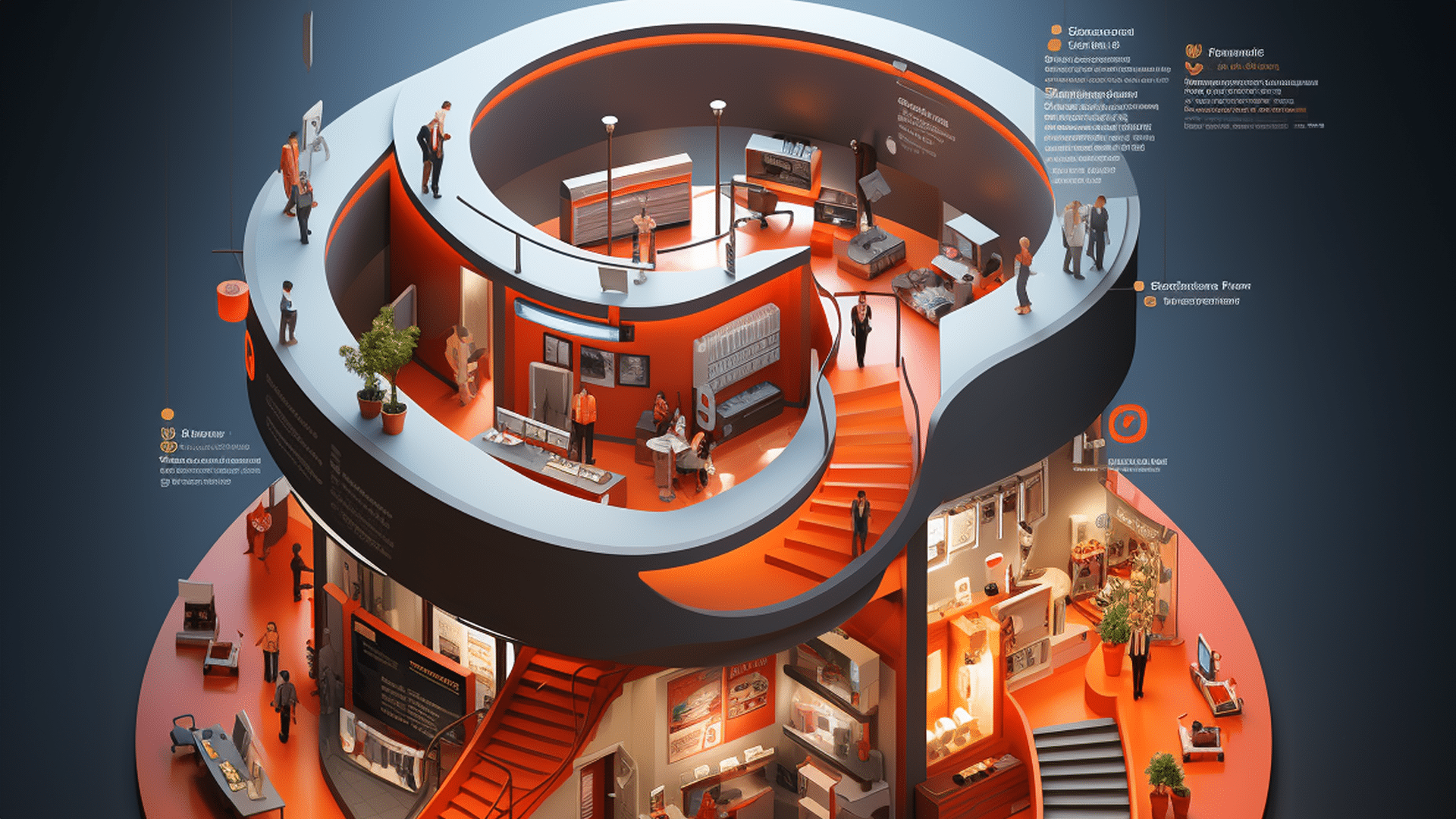Customers have more ways to communicate with your organization than ever before, which presents a challenge for designing a seamless customer service journey. Multiple touchpoints, disconnected experiences, and increased costs can hinder customer satisfaction. Overcoming these challenges requires the necessary tools for your team and skills within that team. In this blog, we will explore the key strategies businesses can implement to deliver the seamless customer service journey your customers want.
How do you create a seamless customer service journey?
A customer service journey is the path your customers have to take to resolve their concerns. In simpler times — decades ago — a customer service journey might be as simple as having a customer go to the “service” desk at a retail location and resolving their problem there.
In the modern digital age, there are many methods of resolving a concern. This proliferation has added convenience but creates a risk of confusion. What is the best channel for a customer to resolve quickly? How are those channels integrate within your support center? These are the challenges that must be resolved. It’s unsurprising a majority of companies with a support center have prioritized creating a seamless customer service journey.

Step One: Create a Unified Agent Desktop
The multiple channels available today are the first challenge for your customer service journey because customers don’t know where to begin. Your organization could have a support email, a support phone number, and a chatbot on your website in addition to an Instagram page, an X (Twitter) account, and a Facebook page. Anyone in desperate need of service may be tempted to flood all of these channels with the same inquiry.
For your customer service representatives (CSRs), the numerous channels are a challenge that can be easily resolved with a unified agent desktop (UAD). The unified agent desktop allows CSRs to monitor multiple channels at the same time. This enables CSRs to respond more quickly to customer queries without getting lost in a series of tabs or windows spread across different channels. More advanced customer service tools can leverage AI to expedite responses by recommending responses based on conversational context.
Establishing a unified agent desktop requires establishing a team of experienced CSRs with experience in phone and digital engagement. These two categories broadly define the needs for different methods of engaging with customers. The team should collaborate with software engineering leaders (or representatives for the solution your organization chooses) to design a unified agent desktop that accommodates the nuances of each channel. For example, you may have a chat-like experience available across multiple channels but it may be the case only some of them allow customers to attach and receive images.
Whatever solution you pick should have the functionality of integrating multiple channels and retaining interaction context across channels. Context retention ensures you can guide a customer through their journey to a resolution even if they choose to start their engagement across multiple channels. The tool you use to implement UAD is the resource part of the equation, but your workforce also needs the ability to work within a unified agent desktop.
Step Two: Reskill or Multiskill CSRs
A traditional silo within the contact center is dividing the digital service team from the telephone service team. The divide is understandable — some CSRs are skilled at phone conversations whereas others excel in text-based communication.
However, implementing a unified agent desk would require all agents to possess skills in both methods of engagement. Eliminating these silos fosters best practices within your support center while preventing potential negative experiences. Implementing these skills within your CSRs doesn’t require new hiring, but can be accomplished with retraining programs that can be linked to utilizing the new UAD interface.
Retraining can sound cumbersome but it doesn’t need to be. Creating a tailored coaching program aligned with your CSRs’ engagement skills, learning preferences, and career aspirations can be crucial for a successful transition to a support center utilizing a UAD. The personalization of this retraining ensures your CSRs see the value of the retraining and don’t get lost during the multiskilling initiative.
Step Three: Effective Utilization of CSRs for Multichannel Engagement
Once you have your UAD integrated and staff trained, it is important your support center learns to blend synchronous and asynchronous communication channels. Your CSRs should be trained to handle telephone and digital engagements while emphasizing the time-management skills needed to handle both methods of engagement throughout the day.
Skilling your CSRs to handle both methods of engagement allows your support center to implement a “push” approach for managing incoming calls — where the system pushes customer calls to available agents. The benefit of this approach is it provides the customer with an accurate estimate of when their call will be answered by an agent.
Once established, your support center will have more consistent metrics across all channels and a well-rounded CSR team. This may uncover hidden talents within your team and new ways to optimize efficiency within your customer service operations.

Benefits of a Seamless Customer Service Journey
The majority of companies with a support center have prioritized designing a seamless customer service journey and for good reason. In today’s competitive landscape — with dramatic technology innovations disrupting all sectors — every business needs to further its competitive edge.
Equipping your customer service representatives with the necessary tools and skills can result in greater efficiency and reduced costs. The efficiency gained by multiskilling your CSRs and effectively utilizing them for multichannel engagement can lead to further productivity gains for your support center. These gains can be compounded with knowledge products augmented with AI can further expedite the time your agents spend looking for answers while increasing the accuracy of response to customers. By implementing these strategies businesses can enhance customer satisfaction, loyalty, and ultimately drive business growth.




